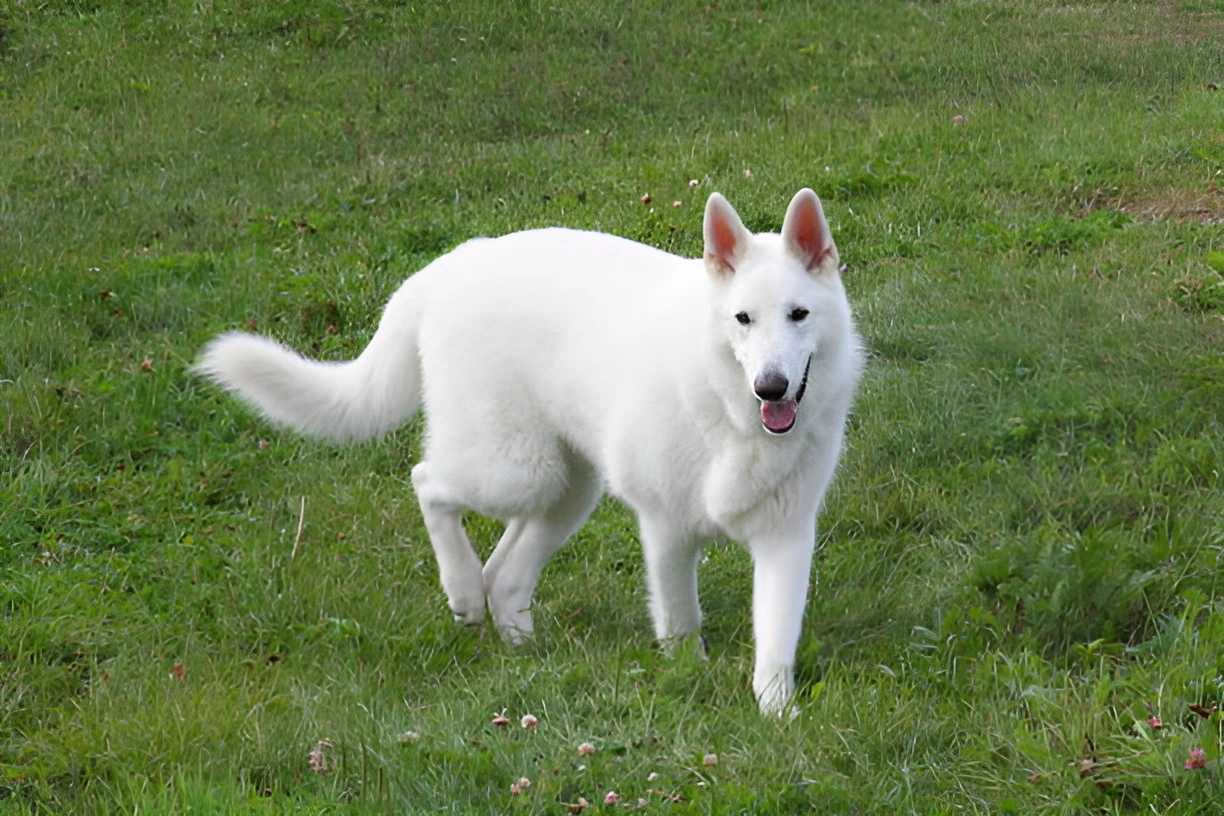White German Shepherds are not commonly used in police work due to their visibility and perceived lack of aggression compared to their darker counterparts. This article delves into the reasons behind this preference, exploring the history, traits, and practical considerations that influence the choice of police dogs. German Shepherds are renowned for their roles in police and military work, thanks to their intelligence, strength, and versatility. However, you might notice that white German Shepherds are rarely seen in these roles. This comprehensive guide will explore the reasons behind this preference, providing insights into the breed’s history, characteristics, and the practicalities of police work.
The History of German Shepherds in Police Work
German Shepherds have a long history of serving in various working roles. The breed was developed in the late 19th century by Captain Max von Stephanitz, who aimed to create the perfect herding dog. Over time, their intelligence, loyalty, and physical capabilities made them ideal for police and military work.
Why White German Shepherds Are Less Common in Police Work
1. Visibility: One of the primary reasons white German Shepherds are less favored in police work is their visibility. Darker-colored dogs blend into various environments more easily, making them less noticeable during operations, especially at night.
2. Perceived Aggression: There is a perception that darker German Shepherds appear more intimidating and aggressive, which can be advantageous in law enforcement scenarios. This perception can enhance the psychological impact on suspects.
3. Breed Standards and Preferences: Historically, the breed standards set by organizations like the American Kennel Club (AKC) and the German Shepherd Dog Club of America (GSDCA) have favored darker colors. White German Shepherds were even excluded from registration in Germany in the early 20th century.
Traits of German Shepherds That Make Them Ideal for Police Work
1. Intelligence: German Shepherds are highly intelligent and capable of learning complex tasks quickly. This trait is crucial for police work, where dogs must perform a variety of duties, from tracking to apprehension.
2. Physical Strength and Agility: These dogs possess the physical strength and agility needed to tackle demanding tasks. Their robust build allows them to handle physical confrontations and navigate challenging terrains.
3. Loyalty and Trainability: German Shepherds are known for their loyalty and eagerness to please their handlers. This makes them highly trainable and reliable in high-stress situations.
The Role of Color in Dog Selection
While color should not theoretically impact a dog’s ability to perform, it does play a role in perception and practicality. Darker dogs are often perceived as more formidable, which can be a psychological advantage in law enforcement. Additionally, darker coats provide better camouflage, which is beneficial during night operations.
Health and Genetic Considerations
1. Genetic Diversity: Breeding for specific colors can sometimes lead to a reduction in genetic diversity, which may increase the risk of hereditary health issues. Ensuring a diverse gene pool is essential for maintaining the overall health of the breed.
2. Health Issues: White German Shepherds are not inherently less healthy than their darker counterparts, but they can be prone to certain genetic conditions, such as deafness and skin issues, which may affect their suitability for demanding roles.
Training and Performance
1. Training Requirements: All German Shepherds, regardless of color, require rigorous training to perform effectively in police work. This includes obedience training, agility training, and specialized training for tasks such as tracking and apprehension.
2. Performance Metrics: The performance of a police dog is measured by its ability to execute commands, handle stress, and perform tasks reliably. While color does not directly impact these metrics, the aforementioned perceptions and practical considerations do play a role in the selection process.
Practical Considerations in Police Work
1. Operational Efficiency: In high-stakes situations, the ability to blend into the environment can be crucial. Darker German Shepherds are less likely to be spotted by suspects, giving officers a tactical advantage.
2. Public Perception: The appearance of police dogs can influence public perception. Darker dogs are often seen as more authoritative and intimidating, which can help in controlling situations without the need for physical intervention.
3. Maintenance and Care: White coats can show dirt and stains more easily, requiring more frequent grooming and maintenance. This can be a practical consideration for police departments with limited resources.
Case Studies and Examples
1. Historical Use: Historically, police forces have favored darker German Shepherds for their perceived advantages in visibility and intimidation. This preference has been reinforced by successful deployments and positive outcomes in various operations.
2. Modern Practices: While some police departments have started to diversify their canine units, the preference for darker German Shepherds remains strong. This is due to the combination of tradition, practicality, and the proven effectiveness of these dogs in the field.
Conclusion
While white German Shepherds possess many of the same qualities that make their darker counterparts excellent police dogs, practical considerations such as visibility and perceived aggression influence their selection for police work. Understanding these factors provides insight into the complex decision-making process behind the choice of police dogs.
The photo featured below the post headline is Credit: Nicholas Chase/istockphoto
I hope you find this post helpful and informative. If Yes’ feel free to share it with your friends!
Frequently Asked Questions
Are white German Shepherds less aggressive than darker German Shepherds?
No, aggression levels are not determined by color. However, darker German Shepherds are often perceived as more intimidating, which can be advantageous in law enforcement.
Can white German Shepherds be trained for police work?
Yes, white German Shepherds can be trained for police work. They possess the same intelligence and physical capabilities as their darker counterparts, but practical considerations often lead to a preference for darker dogs.
Are white German Shepherds prone to health issues?
White German Shepherds can be prone to certain genetic conditions, such as deafness and skin issues. However, with proper care and breeding practices, these risks can be managed.
Why were white German Shepherds excluded from registration in Germany?
In the early 20th century, breed standards in Germany were amended to exclude white-coated German Shepherds. This decision was based on aesthetic preferences and the belief that white coats were linked to health issues.
Do police departments use other breeds of white dogs?
Yes, some police departments use other breeds of white dogs, such as the Belgian Malinois, which are valued for their working abilities. The choice of breed and color depends on the specific needs and preferences of the department.

